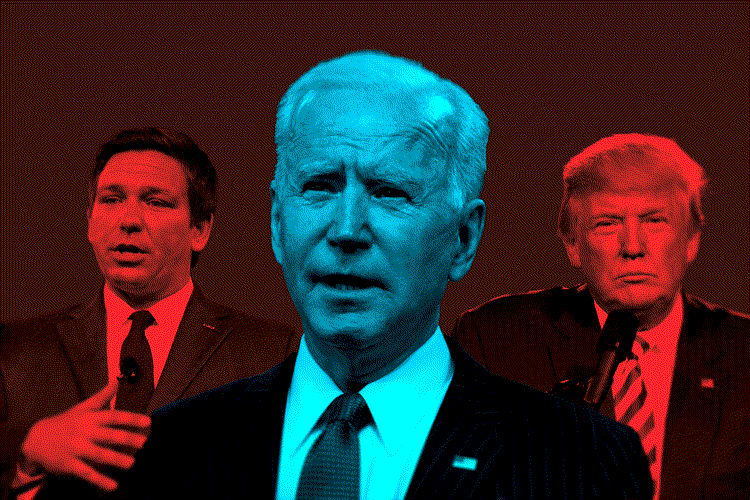
Sept. 9, 2023 by David Silverberg
Natural disasters create political winners and losers.
As a general rule, disasters favor incumbents—but only if they perform well.
Florida has just been through Hurricane Idalia. So how well did the three of America’s top politicians (two in Florida) perform in response? And what are the likely political consequences of their actions?
Joe on the spot

For a sitting president, disasters are dicey propositions. A responsible president wants to be alert and aware of all developments and take whatever actions are necessary to aid and support the victims and the response. He wants to do all this without seeming to exploit the situation for political or partisan benefit.
A good example of this occurred in 1969 when President Richard Nixon stayed in touch with affected governors in the run-up to Hurricane Camille. As the storm approached the Louisiana, Mississippi and Alabama Gulf coasts, Nixon appointed Vice President Spiro Agnew to personally handle states’ needs. Mississippi Gov. John Bell Williams received a phone call from Agnew. “…The Vice President of the United States wanted us to know in advance that they stood ready and anxious to assist us in any way that they could,” Bell said afterwards.
Today the Federal Emergency Management Agency (FEMA) handles all the preparing, prepositioning, mobilizing and coordinating when a storm is about to strike. (Of course, sudden, unexpected disasters like the Maui wildfires pose different challenges.) There are well-established protocols before, during and after the event.
Once the disaster has occurred all officials face new choices. High-profile executives like presidents, governors and mayors want to get a sense of the scope of the disaster with a personal visit and provide comfort and show concern for the victims. Against this is the concern that a visit will interfere with operations and rescues. Moreover, failing to visit in person or waiting too long can seem to signal indifference or neglect.
An example of one of the worst presidential responses to a disaster came in 2005 when President George W. Bush, chose to fly over the stricken city of New Orleans in Air Force One. He hadn’t responded to the storm when it struck the city days earlier and his distance and the superficiality of his flyover suggested callousness and disengagement. It was no substitute for a visit on the ground.
Biden has seen many disasters and responses during his time as a US Senator, Vice President and President, so Hurricane Idalia was nothing new. Just ten days before Hurricane Idalia hit, he visited wildfire-stricken Maui.
Before the storm, Biden was in contact with all the governors of the likely affected states. After speaking to Florida Gov. Ron DeSantis (R) he prepared an emergency declaration so Floridians would get the federal support they needed once the hurricane struck.
With Biden’s approval, FEMA surged emergency personnel into the affected area and got endangered residents out.
“As a matter of fact, I have asked that [FEMA Administrator Deanne Criswell] get on a plane and leave for Florida this afternoon,” he announced on Aug. 31. “She will meet with Governor DeSantis tomorrow and begin helping, conducting the federal assessment at my direction.”
He also told the press corps: “I let each governor I spoke with know that if there’s anything — anything the states need right now, I am ready to mobilize that support of what they need.”
He also convened a Cabinet meeting to make sure that all federal departments and agencies contributed to a “whole-of-government” response.
That may seem like an obvious action to take but that hasn’t always been the presidential response in past disasters.
Particularly dicey was Biden’s relationship with DeSantis, who as a Republican presidential candidate had been relentlessly criticizing and attacking him. However, the two had experience working together on other disaster responses: the Surfside building collapse in 2021 and Hurricane Ian in 2022.
Biden was asked directly about this by a reporter: “Mr. President, Governor DeSantis is also running for president. You are running for reelection. Do you sense any politics in your conversations with him about this issue?”
Biden answered: “No, believe it or not. I know that sounds strange, especially how — looking at the nature of politics today.
“But, you know, I was down there when…the last major storm. I spent a lot of time with him, walking from village to — from community to community, making sure he had what he needed to get it done. I think he trusts my judgment and my desire to help. And I trust him to be able to suggest that he’s… .This is not about politics. This is about taking care of the people of his state.”
Biden came to Live Oak, Fla., on Saturday, Sept. 2 to see Idalia’s damage for himself.
“I’m here today to deliver a clear message to the people of Florida and throughout the Southeast,” he said, standing in front of a home with a massive, downed tree in the background. “As I told your governor: If there is anything your state needs, I’m ready to mobilize that support — anything they need related to these storms. Your nation has your back, and we’ll be with you until the job is done.”
Of course, DeSantis wasn’t present to hear those words.
Ron returns
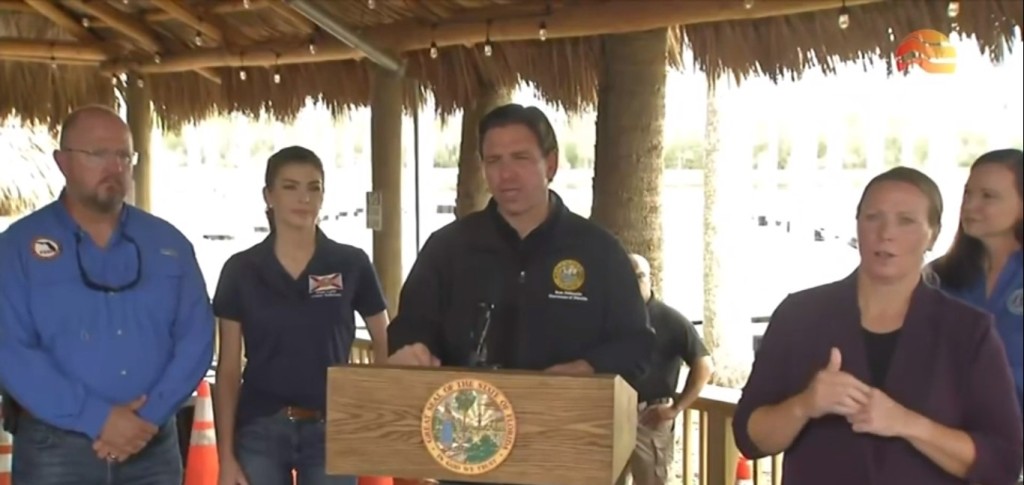
On Saturday, Aug. 26, while still campaigning in South Carolina, DeSantis declared a state of emergency in 33 Florida counties. This allowed the Florida National Guard to mobilize 1,100 troops and the Florida Department of Law Enforcement to assign officers and mobile command units to hurricane response. Throughout the state, government agencies prepared for the impact, including the Florida Highway Patrol and the departments of Commerce and Transportation.
On Sunday, Aug. 27, DeSantis suspended campaigning and returned to Florida to oversee the Idalia response.
“We’re locked down on this. We’re gonna get the job done. This is important, so people can rest assured,” DeSantis told reporters during a briefing at the state Emergency Management Center. Asked where he’d be for the next week, he replied: “I am here. I am here.”
DeSantis wasn’t just returning to a hurricane; on Aug. 26 a racist gunman in Jacksonville randomly killed three black shoppers at a Dollar General store before committing suicide. On Sunday DeSantis was booed when he attended a vigil honoring the dead.
But the hurricane was an ongoing and impending threat that demanded attention. In the days that followed, as Idalia strengthened, traveled up the coast and made landfall in the Big Bend region, DeSantis focused on his gubernatorial duties, regularly briefed the media, and warned Floridians of potential dangers and urged precautions. He seemed in command, both of the forces on the ground and of the facts.
DeSantis didn’t just suspend his in-person campaigning, he also suspended his hostility to Biden.
“When you have situations like this, you’ve got to put the interests of the people first,” DeSantis told reporters in Tallahassee the next day. “There’s time and a place to have [a] political season, but then there’s a time and a place to say that this is something that’s life-threatening. This is something that could potentially cost somebody their life, that could cost them their livelihood. And we have a responsibility as Americans to come together and do what we can to mitigate any damage and to protect people.”
He appeared authoritative and knowledgeable and when Idalia made landfall and moved on, the DeSantis campaign was ready to make the most of it.
Andrew Romeo, DeSantis campaign communications director, issued a campaign memo praising DeSantis in for “Strong Leadership” and a “Swift Response.”
In the memo, obtained by Florida Politics reporter Jacob Ogles, which provided talking points for DeSantis supporters, Romeo stated: “The DeSantis Administration helped guide the state through another historic storm.” He noted that, “As part of that effort, Ron DeSantis appropriately left the presidential campaign trail to focus on the needs of Floridians.”
Democrats were unimpressed. “It’s the bare minimum,” said state Rep. Anna Eskamani (D-42-Orlando). “In the context of responding to a hurricane, of course you’re supposed to be here and to help communicate what first responders are doing. In the context of innocent people being murdered for the color of their skin by a racist gunman, the bare minimum is to express condolences with loved ones.”
After Idalia passed, DeSantis faced a new choice: how to react to Biden’s visit? Now that the immediate emergency was over, it was time for politics.
On the one hand, DeSantis and Biden had seemed to reach a truce in order to serve Floridians.
Much depended on where and when the President would visit.
According to FEMA Administrator Criswell, the White House took operational issues into consideration when choosing the place and time and informed DeSantis in advance.
“When the president contacted the governor to let him know he was going to be visiting … the governor’s team and my team mutually agreed on a place that would have minimal impact into operations,” Criswell said on the program CNN This Morning. “Live Oak, you know, the power is being restored. The roads aren’t blocked, but there’s families that are hurting there.”
White House press secretary Karine Jean-Pierre confirmed Criswell’s account, saying: “The president spoke with the governor. It was an understanding. The president said to him he was coming to Florida. We never heard any disagreement with it.”
Biden said he expected to meet DeSantis when he arrived.
But the day before, DeSantis announced that he wouldn’t be present.
“We don’t have any plans for the Governor to meet with the President tomorrow,” Jeremy Redfern, DeSantis’ press secretary, announced in a press statement. “In these rural communities, and so soon after impact, the security preparations alone that would go into setting up such a meeting would shut down ongoing recovery efforts.”
Once he was in Live Oak, Biden was asked if he was disappointed that DeSantis was absent.
“No, I’m not disappointed,” Biden responded. “He may have had other reasons because…but he did help us plan this. He sat with FEMA and decided where we should go, where it’d be the least disruption.”
In pointed contrast, Sen. Rick Scott (R-Fla.), a bitter rival of DeSantis, was present and had fulsome praise for Biden.
“First off, the President did a great job with the early declaration before the storm hit the coast. That was a big deal. It helped all these first responders,” said Scott, who as governor had weathered Hurricane Irma. “And then with how fast you approved through FEMA the individual assistance, the public assistance and debris pickup is a big deal to everyone in these communities.”
Biden, for his part, said he was “very pleased” that Scott was present even though politically they do not agree on “very much at all.” That was especially gracious given that last year after Hurricane Ian and just before his visit to Southwest Florida, Scott called Biden “a raving lunatic.”
Another of DeSantis’ political rivals had sharp words for his absence from the president’s visit—and he spoke from hard experience.

On Oct. 29, 2012, amidst a presidential campaign, Hurricane Sandy came ashore in Brigantine, NJ as a Category 3 storm and did tremendous damage to the Garden State and neighboring New York City. Republican Chris Christie was then the governor and was considered a leading vice presidential candidate for nominee Mitt Romney and a potential contender in 2016.
When Democratic President Barack Obama, running for re-election, offered help to the stricken state, Christie eagerly accepted it and praised the president, whose assistance he called “outstanding.”
“I want to thank the president personally for his personal attention to this,” said Christie at the time, adding later that Obama kept all his promises. When Obama arrived on the last day of October to see the damage for himself, Christie hugged him and faced scorn and vituperation from fellow Republicans ever afterwards.
So Christie, a presidential candidate this year, knew whereof he spoke when it came to disasters and presidential visits.
“Your job as Governor is to be the tour guide for the President. It’s to make sure the President sees your people, sees the damage, sees the suffering, what’s going on, and what’s going to need to be done to rebuild it. You’re doing your job. And unfortunately, he put politics ahead of his job. That was his choice,” Christie said of DeSantis in a television interview.
He continued: “I’m not the least bit surprised that that’s what he chose to do. You’re the governor of the state. The President of the United States comes and you’re asking the President of the United States or the Congress for significant aid, which Ron DeSantis is doing, and especially if you voted against it ten years ago for Sandy aid, you should have been there with the President to welcome it.” That last reference was a bit of payback for DeSantis’ vote when he was a congressman to deny an appropriations bill that helped New Jersey.
DeSantis maintained he spent the day touring other places. “I was in the communities that were the hardest hit by the storm. And Joe Biden didn’t go to those areas, I think correctly, because the whole security apparatus would have shut down the recovery. So I was exactly where I needed to be,” DeSantis said in a television interview at the end of the day.
Missing man

Former President Donald Trump did not have any executive authority or operational responsibilities during Hurricane Idalia. However, he was a Florida resident and a presidential candidate, so his actions and pronouncements were in the public domain.
Like both Biden and DeSantis he had experience with disasters. On Sept. 14, 2017 he visited Fort Myers and Naples after Hurricane Irma, accompanied by his wife Melania and Vice President Mike Pence. He offered words of thanks and encouragement to first responders and in East Naples handed out sandwiches. This followed a visit to Texas and Louisiana to see the effects of Hurricane Harvey, which had struck 16 days earlier. Then, on Oct. 4, he visited Puerto Rico, which had been struck by Hurricane Maria. It was on that occasion that he infamously tossed paper towels to a church full of hurricane victims.
This year, Trump did not take any actions or make any statements related to the hurricane, which bypassed his Palm Beach home, Mar-a-Lago.
He did, however, maintain a drumbeat of criticism of DeSantis on his Truth Social media platform, ranging from floating a false statement that DeSantis had dropped out of the race to attacking him for Florida’s high insurance rates.
“Trump ignored the storm for days, instead posting a litany of insults aimed at his political adversaries while highlighting positive poll numbers for his campaign,” reported Max Greenwood in the Tampa Bay Times on Aug. 31.
“By the time Trump mentioned Hurricane Idalia in a Wednesday afternoon post, he had already posted more than 140 times on Truth Social since Monday on a multitude of subjects, even dredging up an old letter the late actor Kirk Douglas sent him in 1998. (The count of Trump’s posts includes times in which he reposted messages from other accounts.)
“Kirk was a real Movie ‘Star,’” Trump wrote Wednesday, before mentioning the hurricane. “Not many left today. They are mostly woke and weak!”
When asked about Trump’s hurricane-related silence at one of his press conferences, DeSantis shrugged it off. “Not my concern. My concern is protecting the people of Florida, being ready to go,” he said.
Analysis: Winners and losers
Of the three politicians, DeSantis faced the most difficult choices: one was to decide whether to suspend his campaign and return to Florida and the other was whether to meet Biden when he visited.
The decision to return to Florida was relatively easy: First, he belonged in Florida at that moment. Secondly, if he had not returned, he would have faced blistering criticism from all quarters and been hammered for not being presidential. It would have also damaged the state and its people. While the lieutenant governor could have handled the crisis, an absent governor would have seemed cowardly and hurt the response. His already declining poll numbers would have plummeted. It might have meant the end of his candidacy. Returning was the obvious and proper thing to do.
The Biden visit presented a very different challenge. With the storm passed, political considerations were paramount. DeSantis and his people had to worry that perhaps the governor’s relationship with the President had become too close and might alienate Republican primary voters. After all, they had the example of Christie’s 2012 embrace of Obama as an example of extreme Republican voter retaliation for a momentary human act of bipartisan cooperation (as well as Florida Gov. Charlie Crist’s 2014 Obama embrace).
Also, greeting the president might have made the defiant, anti-Biden DeSantis seem too subservient to a president he had repeatedly insulted and denigrated and might be running against. And Biden would have completely eclipsed the governor, who would have had to respectfully and silently stand behind him as he spoke.
So the choice was: greet the president for the sake of Florida and face Republican primary voter retaliation, or avoid the president and face media and opposition criticism.
Whatever the exact calculation, DeSantis chose to snub Biden—and snub it was, the DeSantis camp’s lame excuses notwithstanding. It made DeSantis seem petty, overly political and irresponsible, as Christie pointed out. It added to his image of meanness and arrogance.
The snub has already overshadowed an otherwise capable performance as governor in a crisis. People expect calm, command, and competence from their leaders during events like hurricanes and in this DeSantis delivered. His job was to make the emergency declarations, authorize the proper state agencies to take action and facilitate the response. From all evidence, he did this.
The question for DeSantis is not whether this will find favor with Floridians since they’ve already voted and he won’t be running again for governor. The real question is whether an effective performance as governor in Florida will have any resonance at all with Republican primary voters in Iowa, New Hampshire and South Carolina. South Carolinians know from hurricanes; Iowans and New Hampshirites, not so much. They’re more likely to remember a presidential hug than a hurricane response, so snubbing Biden came at less cost to DeSantis than the value of a meeting for the state of Florida.
Whether Idalia made DeSantis a winner or loser will be told in polls in the days to come and especially in the primaries and caucuses next year, which will determine his presidential fate.
For Biden, Idalia completely confirmed the truth that disasters, if competently handled, favor incumbents
From the outset, Idalia posed no political threat to Biden unless he utterly flubbed the response—which he certainly did not.
In natural disasters, presidents are expected to offer and authorize support for affected areas, coordinate among states and governors, ensure as smooth a federal response as possible and provide comfort and encouragement to victims. Biden did all these things.
While Biden is being criticized for his age, his long governmental experience, political savvy and past disaster management showed in his competence and responsiveness to the Idalia challenge. He knew to stay out of the way of the operators in FEMA and on the ground. He offered a non-partisan hand of cooperation to DeSantis despite the latter’s previous attacks on him. He was high-minded and gracious in the face of an obvious, though petty, snub. He showed care and concern for everyday Floridians hurt by the storm.
It’s not as though he couldn’t get his partisan digs in but they were subtle and dignified yet telling. For example, by making perfectly clear that his visit had been coordinated with DeSantis beforehand he reinforced the perception of DeSantis as petty and politically-obsessed. But Biden did it without anger or rancor.
Clearly, Biden emerged from the storm a winner.
As noted before, Donald Trump had no operational responsibilities or command authorities during the storm. Nonetheless, he is a presidential candidate, a public figure and a Floridian. Despite this, his response, as is so characteristic of him, was deranged, narcissistic and divorced from the reality of a crisis afflicting what is now his home state. Unless the storm had damaged Mar-a-Lago, it’s doubtful he would have noticed it at all.
What is more, at a time when all the other Republican candidates suspended their attacks on DeSantis while he faced the crisis, Trump barely skipped a beat. His attacks “underscore the degree to which Trump, in ways that often escape notice anymore, forgoes the traditional, sober-minded approach of nearly every other Republican and Democratic politician in times of crisis in favor of a style that keeps the focus on himself rather than imperiled communities,” Greenwood observed in the Tampa Bay Times.
“The former president overcame that unorthodox approach to win a presidential race in 2016. But it does still carry some political risk for the candidate, including from some conservatives who bristle at his decision to stay on the attack against DeSantis even amid Florida’s recovery efforts,” he wrote.
As though the indictments, impeachments, past incompetence and insults did not already make clear that Trump is unfit for any office, his response to Idalia should remove any doubts—if doubts anyone can still have.
This particularly applies to Floridians who should remember it when it comes to the presidential primary next March or if, as seems likely, Trump is the Republican nominee in the general election in November. Trump currently leads DeSantis in presidential polling in Florida. But when Florida specifically was threatened, Trump just did not care even though he lives on the same peninsula and shares its fate.
If Joe Biden had Floridians’ backs, Donald Trump turned his back on Floridians.
By any objective measure, Trump should be classified an Idalia loser—but there’s no telling if it will play out that way when the votes are counted in the early primary states and Florida.
Hurricane season is not over. Climate change is producing wild and unpredictable weather. There will be other storms, there will be wildfires, there will be roasting heat, there will be plagues.
Elected leaders will have to cope with all these challenges. A good leader in a crisis saves lives, manages well and provides comfort. The electorate should know what to look for in those who seek to lead them— and make their selections accordingly.

____________________________
Editor’s note: The author’s book, Masters of Disaster: The political and leadership lessons of America’s greatest disasters, is available on Amazon Kindle.
Liberty lives in light
© 2023 by David Silverberg


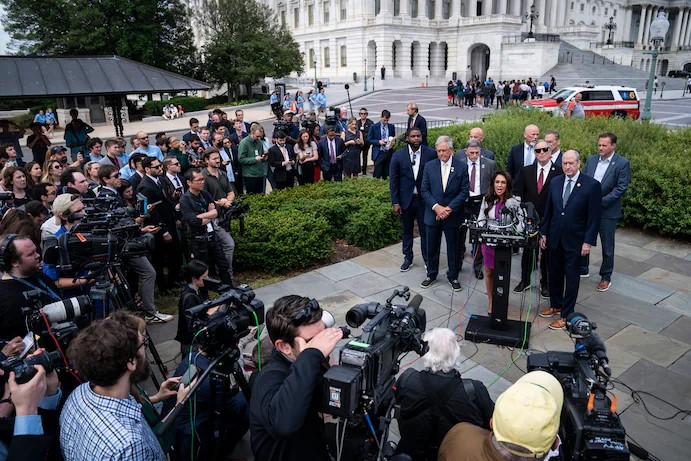


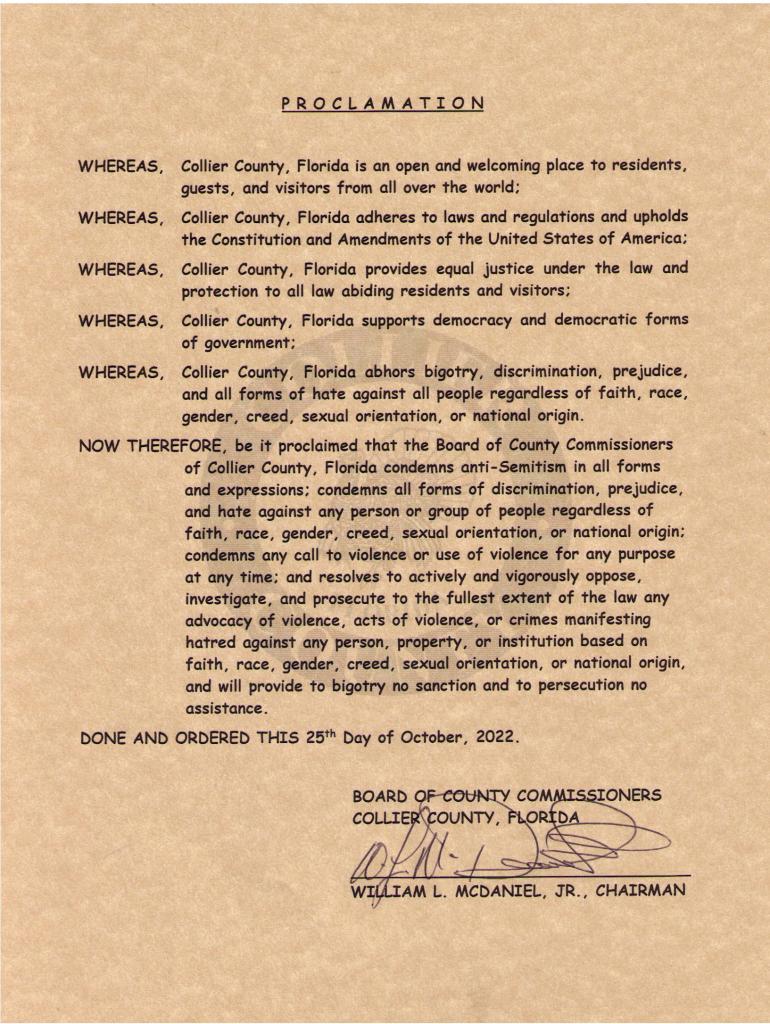

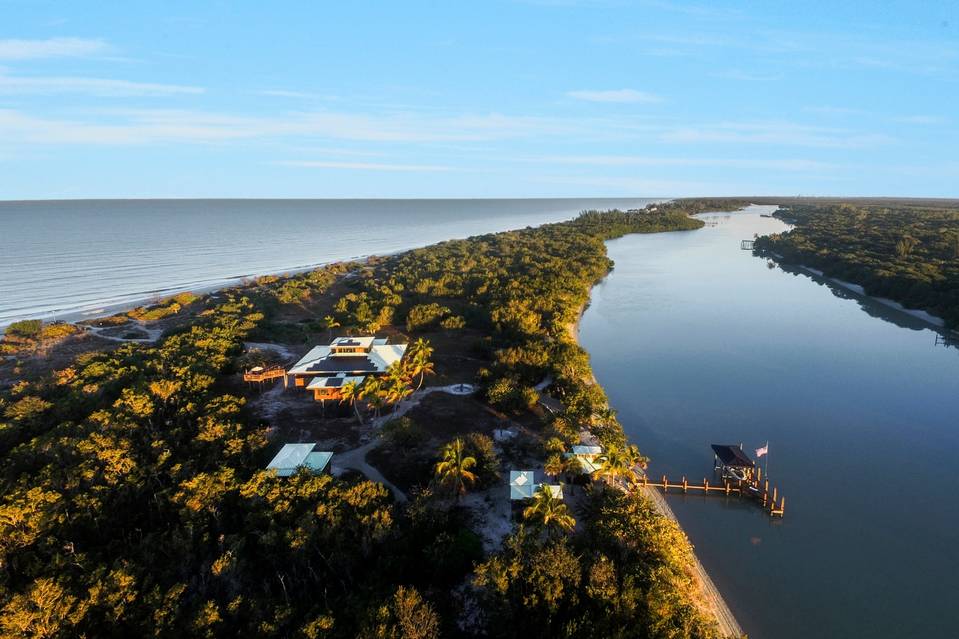
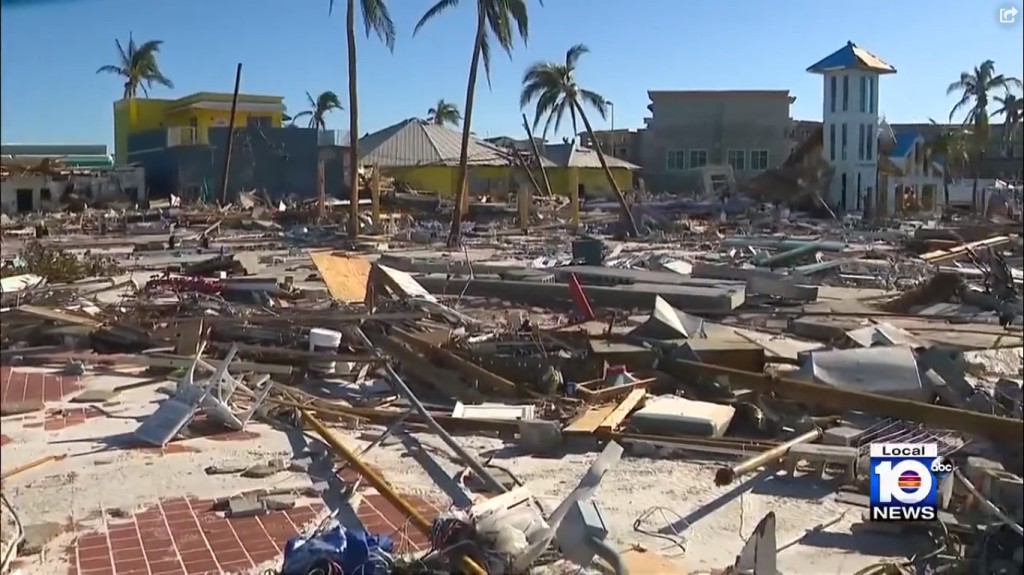





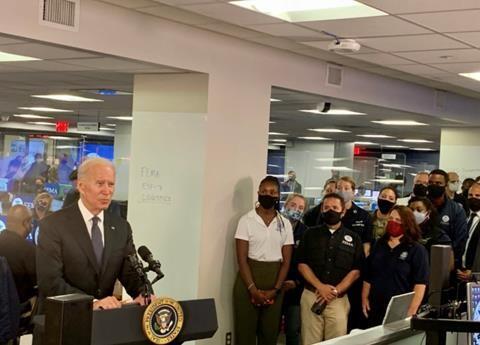
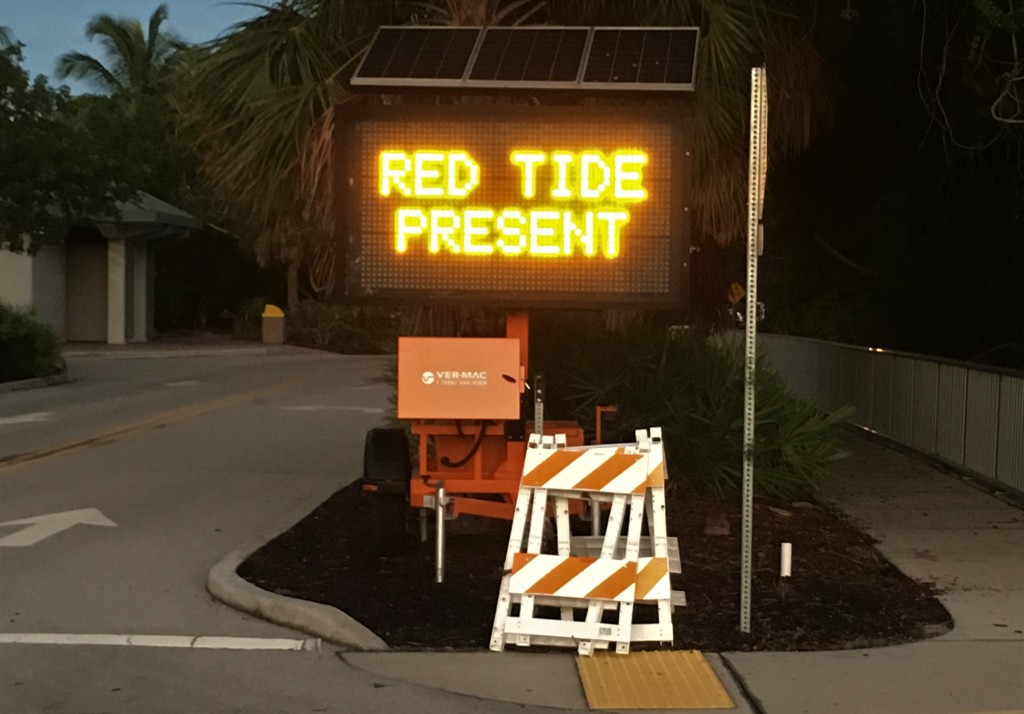

 (Photo illustration)
(Photo illustration)